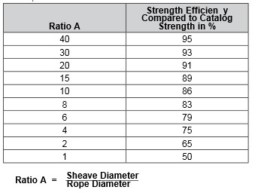I recently has the pleasure of building a crane block for a specific custom applications. This is not the first time in my career that I have gotten to design and build a block but is not something many will do often. If you are thinking of building such a device consider reaching out to us. Here are a few take aways I had from the project.
They Are Supposed to Be Heavy:
I can remember one application where we were building a specialized lifting device (not a crane) and it was trailer mounted device to be pulled by a 1-ton truck. For simplicity sake and speed we had a two part line which meant the tension on the cable was high and the cable appropriately thick. In an attempt to reduce the overall weight of the equipment we opted for a light block. This turned out to be a mistake. The block was functionally strong enough to support the load, which I remember being around 5ton, but was not nearly heavy enough to keep the large diameter line taut during unloaded operation. The device was usable but prone to cable winding problems and was certainly difficult to get attached to the load. If you look at modern crane blocks produced by McKissic or other manufacturer they will often have cheek plates added purely to increase the mass of the block. For instance a 5ton McKissic block ranges from 230 to 425lbs in weight. Or if you look at a overhaul/headache ball the reason they have the large round mass above the hook is to keep the line straight. They are meant to be heavy don’t be shy about adding some steel to them.
Think About the Reeving Process:
If you are building a high capacity multi-part block it is imperative that you think about the reeving process. As you can imagine large diameter high tensile cable is hard to bend by hand and threading it around a lot of sheaves can be a painful experience. A bolt together block with lots of opening to work the rope around the sheaves is ideal. A curved plate below the sheave that guides the wire rope around the sheave and back up is also helpful and can be a simple addition. The major manufacturers all have quick reeving systems that aid in the process and this can be a good resource for ideas.
Pullies & Sheaves
If you are building custom equipment you inevitable have needed to purchase sheaves. From my experience very few suppliers are stocking sheaves in larger sizes and they are usually 12 weeks lead time factory orders. For basic brass bushing solid sheaves you can usually get them designed and made at a local shop for the same money as ordering them from a larger manufacturer and get them weeks quicker. On our last project we were able to source sheaves off the shelf at a crane shop in North America and were able to get them in a week. If you play this game you will inevitable find a sheave close to what you need but not exact. you will try to make the sheaves that you can find work. For instance it will be the wrong diameter, wrong pin size or wrong wire rope size. A good machine shop and an engineer can address the pin and wire rope sizes but if you are thinking of substituting a different sized sheave this reference can be useful. I found this handy Crosby reference (stolen with love: https://www.thecrosbygroup.com/html/en-US/pdf/pgs/380.pdf) outlining the fatigue life and tensile life changes on the rope when none ideal ratios are used. You should probably back this chart up with some sound engineering before you go swapping cables and sheaves around though.


Welding:
If you are building a multi-sheave block and are planning on welding it together pay extra attention to welding parameters and tolerances. With this style of design you will inevitably have a number plates between the sheaves supporting the pin. You will need to apply a lot of heat to get these welded in properly and this heat will cause the steel to move a lot. Maintaining the gap between the plates for the sheaves as well as the hole alignment for the pin us very difficult. While welding you can try and tack the the outer edges of the sheave plates and perform the welding with the pin in it as it helps constrain the movement of the block. However, if you want to avoid spending hours after the fact die grinding holes out and hammering sheaves in make sure you tolerance and gap your parts appropriately.

Some Smaller Things:
Rating Plates: If you read any of my writing you know I am forever reminding everyone to put rating plates on things.
Drainage: Hooks and blocks will inevitably be left outside. Make sure they cant fill up with water and freeze.
Keeper Pins/Bolts: Add a series of bolts or pins around the sheave to make sure the cable cant jump off the sheave.
Make it Grease-able: I like to make the main shaft grease-able but even if you should include some method of greasing it.
Thanks for reading. If you have a custom crane block project on the horizon feel free to give us a call. If you haven’t heard yet we have an online store where you can buy an assortment of lifting equipment drawings that are manufacturing ready. If you have any experiences building crane blocks let me know in the comments.
